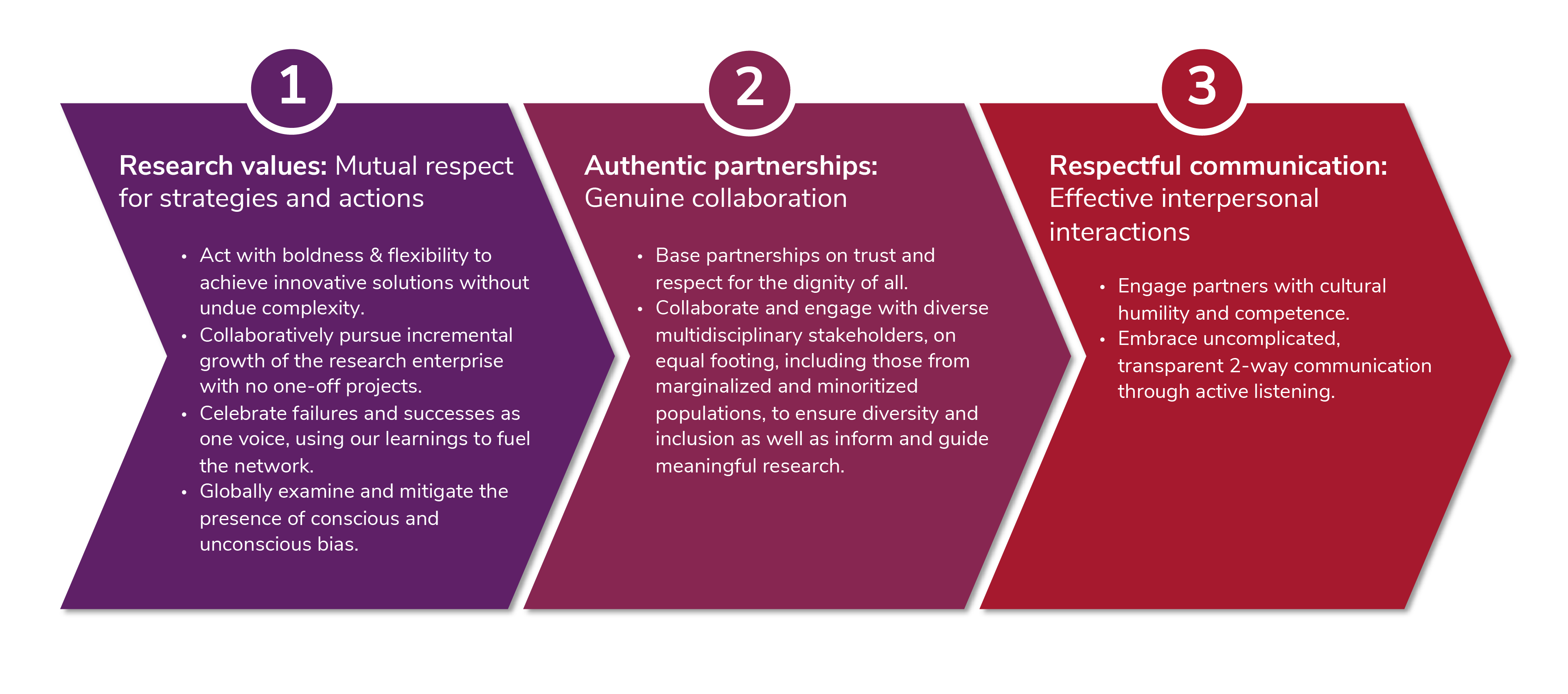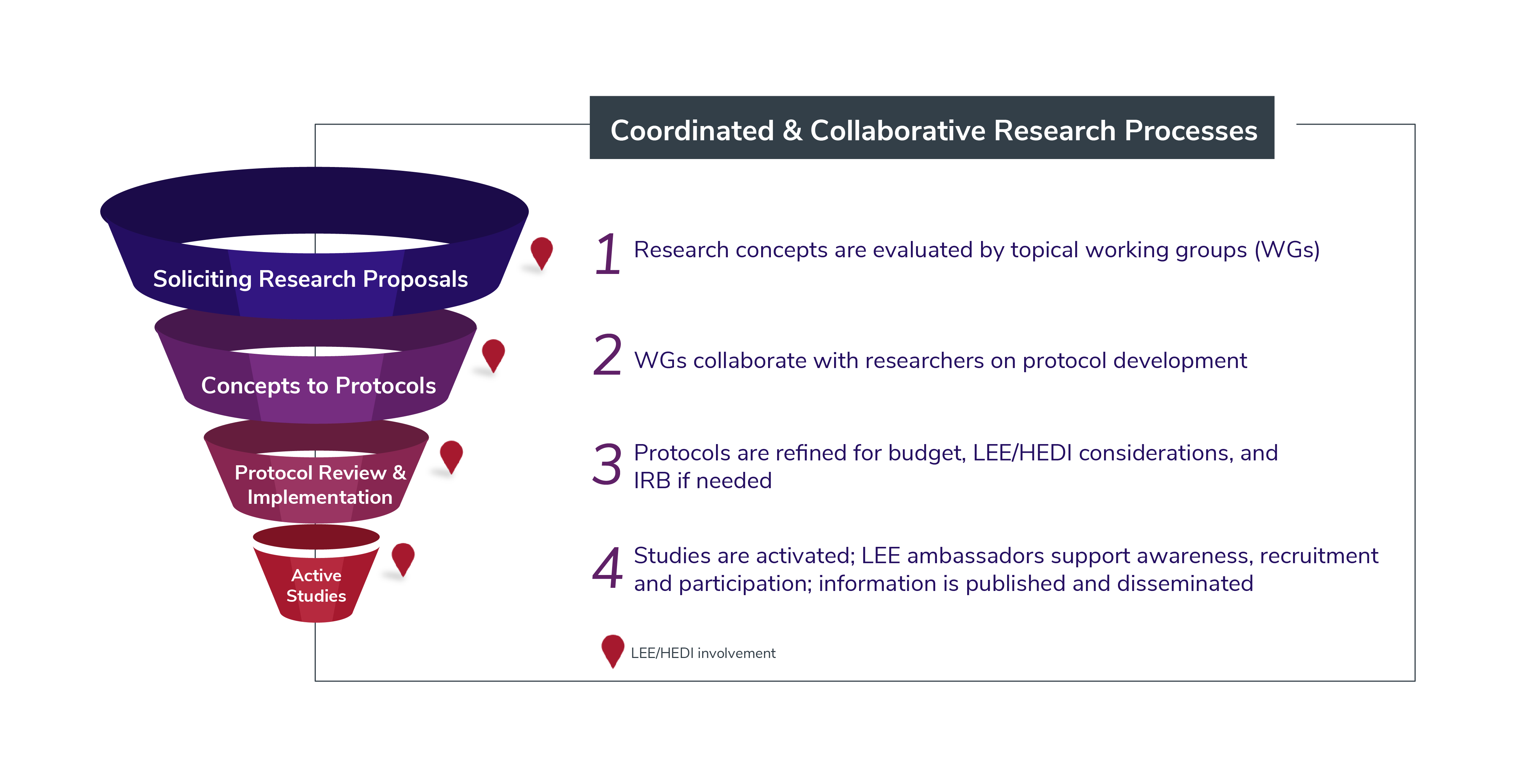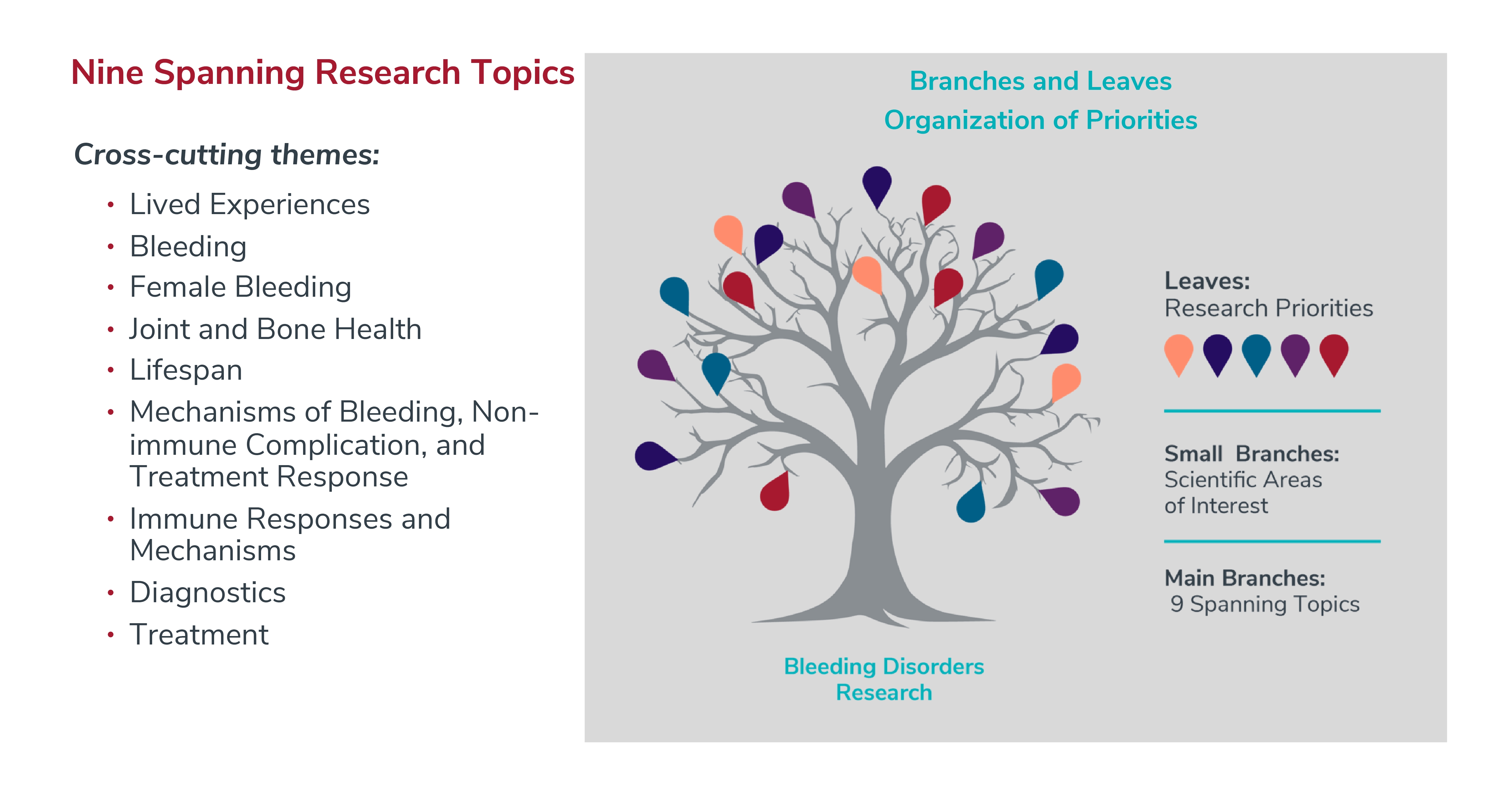Introducing the National Research Blueprint
The purpose of the NRB is to launch an integrated research network that can accelerate our learnings to dramatically improve the experience of living with bleeding disorders for future generations.
We have made incredible progress together in this comprehensive, community-driven initiative, and now the first iteration of the NRB has been prepared and shared with the community. (Read on for more details on how we arrived here! (link to the journey page)
Goals of the Initial Draft
The initial draft of the NRB aims to:
- Delineate its governance and operational structure and the roles and responsibilities of all stakeholders,
- Outline actionable strategies to address the most important needs today and opportunities to accelerate research to address these needs,
- Have well-defined milestones and timelines, and
- Establish mechanisms for evaluation and improvement.
Guiding Principles
NRB participants have developed this series of guiding principles to ensure the NRB embodies the community’s interests and achieves its intended goals.

Governance Structure
The initial draft of the NRB outlines a coordinated oversight and operational structure for a unified research network. Championed by the NBDF research team, the NRB will have dedicated programs assigned to each core pillar, with key inputs provided by scientific and community advisory boards.
What is a “research infrastructure?
The type of process we are designing through the NRB includes the necessary support systems and resources that can enable us to make greater research progress by working together. The “infrastructure” element refers to the physical facilities, equipment, and technology needed to conduct research, such as laboratories, specialized instruments, computing resources, and data storage systems. This also includes the experts we will need, such as skilled researchers, technicians, and support staff, as well as the organizational structures, funding, and networks that facilitate the process. In essence, our research “infrastructure” will provide the tools, environment, and support to pursue our research priorities, generate new knowledge, and address complex problems that can help more people with bleeding disorders.
Governance:

Community contributors have highlighted critical considerations that will ensure the framework for this integrated research network can be successfully implemented. These include:
- Community Engagement and Outreach
- The NRB processes are designed to ensure there is a role for everyone and that the community at large is clearly informed along the way
- Key opportunities:
- Web-based portal for public input on research programs, with two-way feedback and networking opportunities as well as training for individuals to get involved
- Ambassador program to build awareness and understanding, encourage participation, and share updates of research progress
- Web-based portal for public input on research programs, with two-way feedback and networking opportunities as well as training for individuals to get involved
- The NRB processes are designed to ensure there is a role for everyone and that the community at large is clearly informed along the way
- Policy and Government Relations
- Activities are dedicated to supporting favorable policy and funding environments within hemophilia treatment centers (HTCs) and among federal / state partners
- Key efforts:
- Policies facilitating funding and prioritization of community-defined NRB research priorities
- Policy advocacy to support partnerships and research oversight
- Advocacy for support of key NRB goals, including inclusivity in research
- Policies facilitating funding and prioritization of community-defined NRB research priorities
- Activities are dedicated to supporting favorable policy and funding environments within hemophilia treatment centers (HTCs) and among federal / state partners
- LEE Engagement and HEDI Principles
- Successful inclusion of the LEE voice throughout the research process requires dedicated efforts for awareness building, inclusion, and training across the research ecosystem
- Purposeful consideration to identifying and engaging diverse populations to ensure appropriate representation in research initiatives
- Conscious evaluation of ways to address implicit bias, cultural awareness/competence, social determinants of health and barriers to access
- Read more about this on the next page!
- Successful inclusion of the LEE voice throughout the research process requires dedicated efforts for awareness building, inclusion, and training across the research ecosystem
Operational Approach
The process will be operated through what is being termed a “dynamic governance model,” which enables a shared sense of purpose and accountability. Decisions are made with inclusivity in mind, and each step is iterative, meaning the group intends to incorporate continual learning and improvements as the process evolves. This will ensure efforts are well coordinated across the participants’ disciplines and perspectives.
HEDI - Engaging Underrepresented Individuals

Process to Pursue Research Opportunities
Within this structure, participants will follow a collaborative process to pursue new research opportunities, integrating input from LEEs and considering HEDI priorities within each step. For more details on how this process will operate, please watch the Wednesday Webinar recording!

Research Priorities
The NRB has identified bleeding disorder research themes and priorities important to the community to advance research that will improve the lives of all people impacted by bleeding disorders. The NRB will address these research priorities incrementally as the infrastructure is funded, launched, and expanded.
Review the complete list of research priorities
Coming soon! The NRB Steering Committee will be seeking input on these priorities. Please connect with the NBDF to share your thoughts and ideas.


